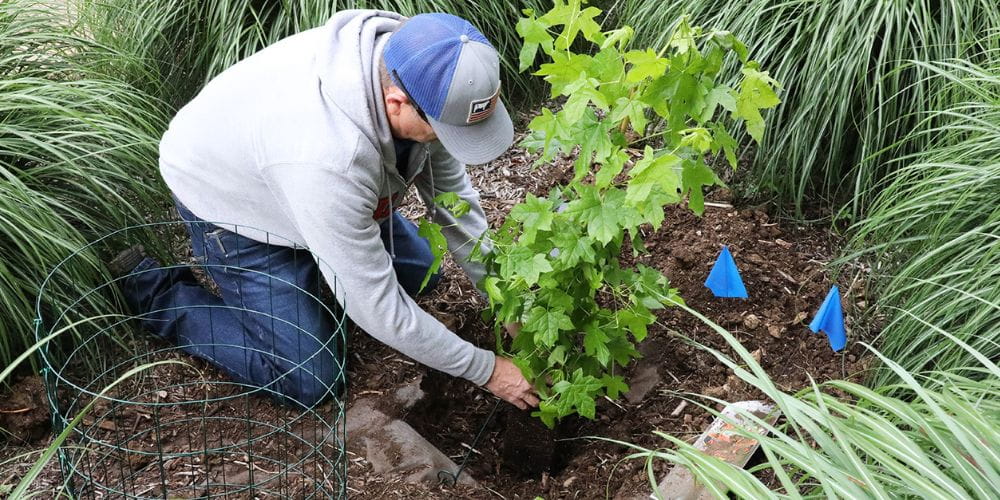“Moon Tree” gift from NASA puts down roots at UTA
A “Moon Tree” grown from a seed that orbited the moon aboard a NASA spacecraft is putting down roots at The University of Texas at Arlington.
The sweetgum seedling arrived at UTA on April 24 and was planted the next day outside the Chemistry & Physics Building, near the Planetarium. The seedling is among those being given to universities, museums, science centers, federal agencies and K-12-serving organizations through the NASA Office of STEM Engagement (OSTEM) as part of a national conservation education initiative.
OSTEM partnered with the U.S. Department of Agriculture to fly five species of tree seeds aboard the Orion spacecraft as part of Artemis I, an uncrewed lunar orbit mission that launched in November 2022 and marked NASA’s return to lunar exploration after a five-decade hiatus. There were nearly 2,000 tree seeds on board, including sycamores, sweetgums, Douglas firs, loblolly pines and giant sequoias.
After reviewing hundreds of applications, NASA selected organizations from across the country to receive the Moon Tree seedlings. The UTA Planetarium is among those chosen for the first phase of distribution this spring.
McKenna Dowd, program coordinator for the UTA Planetarium, spearheaded UTA’s efforts to bring a Moon Tree to campus.
“I finally heard on April 8—the day of the eclipse!—that we would receive a seedling,” Dowd said. “This Moon Tree may inspire generations of students from around the world, or many of the K-12 students and surrounding public that visit our campus. It’ a living reminder of why we all must unite to preserve Earth for future generations.”
The Planetarium plans to install a plaque by the Moon Tree describing its significance and to host a welcome ceremony for the seedling. The sweetgum tree (Liquidambar styraciflua) is native to the southeastern U.S., including parts of Texas. The tree tends to do well in Texas’ hot summer climate.
According to NASA, it chose institutions based on criteria that evaluated their suitability to care for the various tree species and their ability to maximize educational opportunities around the life and growth of the tree in their communities.
“A new era of Moon Trees will one day stand tall in communities across America,” NASA Administrator Bill Nelson said. “NASA is bringing the spirit of exploration back down to Earth because space belongs to everyone. The Artemis generation will carry forth these seedlings that will be fertile ground for creativity, inspiration and discovery for years to come.”
- By Greg Pederson, College of Science
